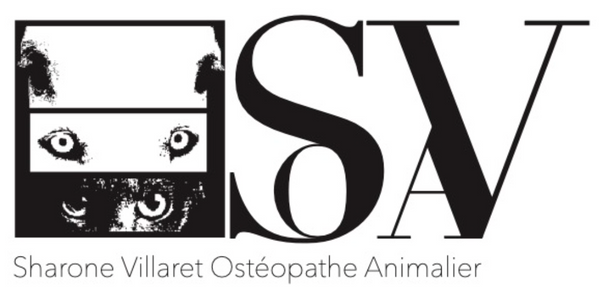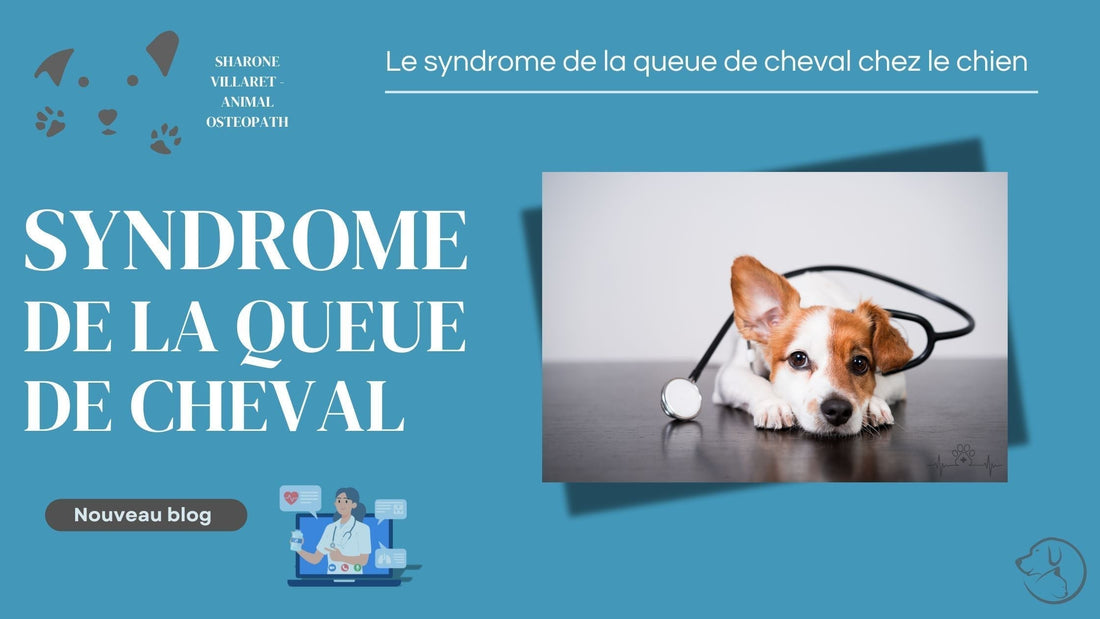Cauda equina syndrome is a neurological condition caused by compression of the lumbosacral and coccygeal nerves located at the end of the spinal cord. These nerves control hindlimb locomotion, pelvic sensation, and urinary and fecal function.
This syndrome can cause pain, hind leg weakness, incontinence, and altered proprioception in dogs.
1. What is a Ponytail?
The cauda equina refers to the set of nerves located after the spinal cord , from the L7 vertebrae to the sacrum and coccyx .
These nerves control:
✔ The muscles of the hind legs and pelvis
✔ The sensory nerves of the perineal region and the tail
✔ Urinary and defecatory functions
📌 When they are compressed , this leads to progressive neurological damage.
2. Causes of Cauda Equina Syndrome
This syndrome is often caused by chronic compression of the lumbosacral nerves , which may be due to:
🔹 Lumbosacral disc herniation (L7-S1) → Direct compression of the spinal cord and nerves.
🔹 Lumbar spondylosis (spinal osteoarthritis) → Formation of bony growths reducing the nerve space.
🔹 Congenital lumbosacral stenosis → Narrowing of the vertebral canal (predisposition in certain breeds).
🔹 Trauma (accident, fall, violent shock) → Sacral nerve injury.
🔹 Spinal tumors or severe inflammation.
💡 Large breeds like the German Shepherd, Labrador or Boxer are more prone to this syndrome due to their morphology.
3. Symptoms of Cauda Equina Syndrome
📌 Clinical signs vary depending on the severity of the nerve compression :
🐾 Locomotor symptoms :
✔ Stiff or dragging gait of the hindquarters
✔ Muscle weakness, loss of support
✔ Proprioceptive disorders (delay in replacing the legs)
✔ Difficulty jumping or climbing stairs
🐾 Neurological symptoms :
✔ Reduced sensitivity in the perineal region and tail
✔ Pain when touched in the lower back and pelvis
✔ Hyper-reactivity or on the contrary insensitivity to tail pinching
🐾 Urinary and fecal disorders (advanced cases):
✔ Difficulty urinating or incontinence
✔ Constipation or involuntary stool leakage
✔ Relaxation of anal tone
💡 Prompt treatment is essential to avoid irreversible worsening.
4. Diagnosis of Cauda Equina Syndrome
🔎 Veterinary clinical examination :
✔ Proprioception and neurological reflex tests
✔ Palpation of the back and pelvis to detect pain
🔎 Medical imaging :
✔ X-ray → Allows the identification of spondylosis or bone deformity.
✔ MRI or CT scan → Confirms nerve compression and assesses its extent.
5. Treatment and Support
📌 Medical Treatments (mild to moderate cases)
✔ Anti-inflammatories (NSAIDs, corticosteroids) to reduce pain and inflammation.
✔ Neurological medications (gabapentin) to relieve nerve compression.
✔ Rest and activity management to avoid worsening.
💡 These treatments are often temporary and aim to relieve symptoms.
📌 Osteopathy and Functional Rehabilitation
Osteopathy helps release spinal and muscular tension , optimizing nerve transmission and improving mobility.
🐾 Techniques used :
✔ Gentle mobilization of the pelvis and lumbar spine
✔ Work on the fascia to improve nerve vascularization
✔ Proprioceptive stimulation to recover better locomotor control
💡 Combined with physiotherapy and appropriate exercises, osteopathy can improve the dog's comfort and recovery.
📌 Surgery (severe or progressive cases)
In cases of severe nerve compression , surgery may be necessary:
✔ Dorsal laminectomy → Removal of part of the vertebra to free the spinal cord.
✔ Foraminotomy → Widening of the nerve exit holes to reduce compression.
📍 Post-operative recovery:
🔹 Functional rehabilitation (physiotherapy, osteopathy)
🔹 Anti-inflammatory and analgesic medications
🔹 Regular veterinary monitoring
6. Prognosis and Quality of Life
✔ Mild to moderate cases → With good medical and osteopathic monitoring, most dogs regain a good quality of life.
✔ Severe cases with urinary/fecal disorders → Early treatment is essential, but some nerve damage may be irreversible.
💡 Prompt treatment and appropriate monitoring can slow the progression of the syndrome and improve the dog's well-being.
7. Conclusion
Cauda equina syndrome is a neurological and locomotor pathology due to compression of the lumbosacral nerves . It manifests itself by a loss of coordination, weakness of the hindquarters and sometimes urinary/fecal disorders .
✅ The diagnosis is based on a clinical examination and advanced imaging (MRI, CT scan).
✅ Treatment can be medical, osteopathic or surgical depending on the severity of the case.
✅ Early treatment significantly improves the dog's quality of life.
💡 Osteopathy is an excellent complement to relieve spinal tension and improve the mobility of dogs with this syndrome. 🐶💙


